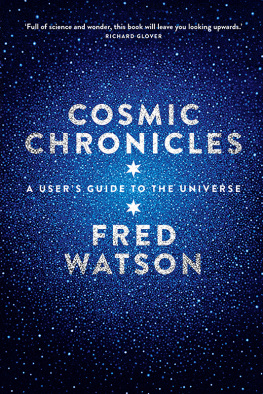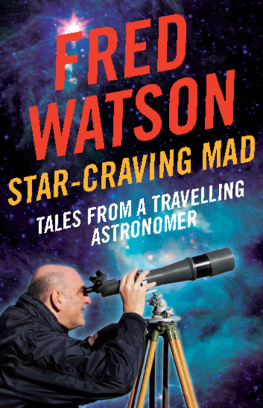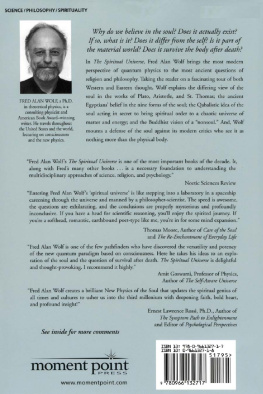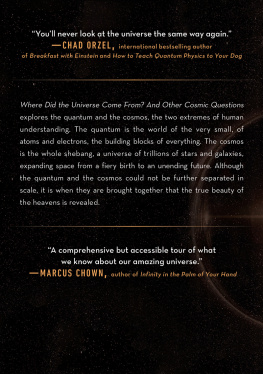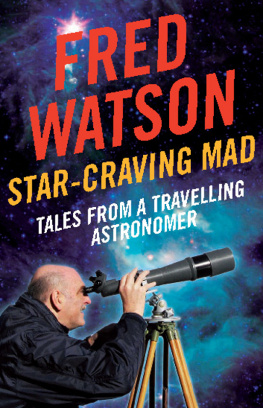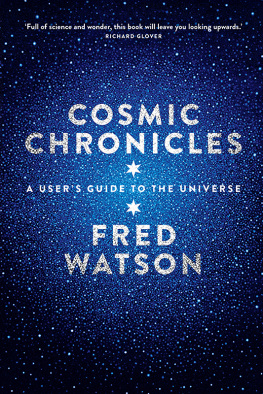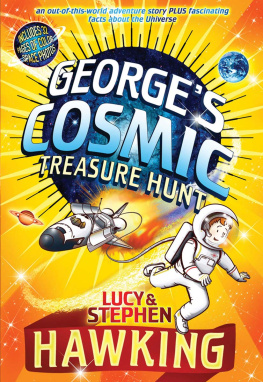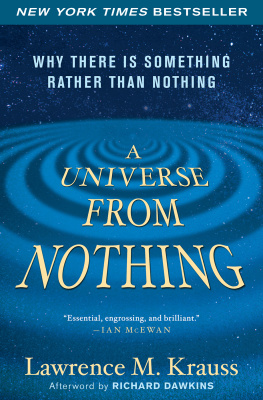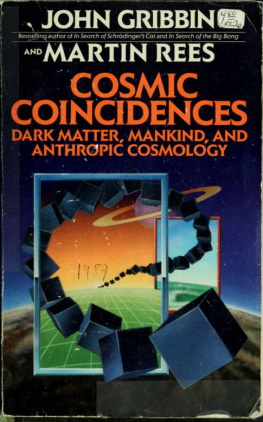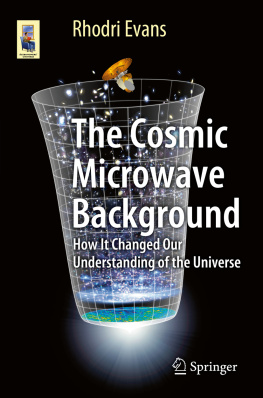Fred Watson - Cosmic Chronicles: A users guide to the Universe
Here you can read online Fred Watson - Cosmic Chronicles: A users guide to the Universe full text of the book (entire story) in english for free. Download pdf and epub, get meaning, cover and reviews about this ebook. year: 2019, publisher: NewSouth Publishing, genre: Detective and thriller. Description of the work, (preface) as well as reviews are available. Best literature library LitArk.com created for fans of good reading and offers a wide selection of genres:
Romance novel
Science fiction
Adventure
Detective
Science
History
Home and family
Prose
Art
Politics
Computer
Non-fiction
Religion
Business
Children
Humor
Choose a favorite category and find really read worthwhile books. Enjoy immersion in the world of imagination, feel the emotions of the characters or learn something new for yourself, make an fascinating discovery.
- Book:Cosmic Chronicles: A users guide to the Universe
- Author:
- Publisher:NewSouth Publishing
- Genre:
- Year:2019
- Rating:4 / 5
- Favourites:Add to favourites
- Your mark:
- 80
- 1
- 2
- 3
- 4
- 5
Cosmic Chronicles: A users guide to the Universe: summary, description and annotation
We offer to read an annotation, description, summary or preface (depends on what the author of the book "Cosmic Chronicles: A users guide to the Universe" wrote himself). If you haven't found the necessary information about the book — write in the comments, we will try to find it.
Cosmic Chronicles: A users guide to the Universe — read online for free the complete book (whole text) full work
Below is the text of the book, divided by pages. System saving the place of the last page read, allows you to conveniently read the book "Cosmic Chronicles: A users guide to the Universe" online for free, without having to search again every time where you left off. Put a bookmark, and you can go to the page where you finished reading at any time.
Font size:
Interval:
Bookmark:

COSMICCHRONICLES
FRED WATSON is Astronomer-at-Large with the Australian Government Department of Industry, Innovation and Science, a position created in 2018 to provide high-level astronomy and science outreach support. He is a graduate of the universities of St Andrews and Edinburgh, and worked at both of Britains Royal Observatories before joining the Australian Astronomical Observatory as Astronomer-in-Charge in 1995. Recognised internationally for helping to pioneer the use of fibre optics in astronomy during the 1980s and 90s, Fred is best known today for his radio and TV broadcasts, popular astronomy books, and other outreach ventures, including music and science tourism. Together, they have earned him a succession of awards, including the 2006 Australian Government Eureka Prize for Promoting Understanding of Science and the UNSW Press Bragg Prize. Fred is an adjunct professor at UNSW and several other Australian universities, and was made a Member of the Order of Australia in 2010. He has an asteroid named after him (5691 Fredwatson), but says that if it hits the Earth, it wont be his fault.
Also by Fred Watson:
Star-Craving Mad: Tales from a travelling astronomer
Stargazer: The life and times of the Telescope
Why Is Uranus Upside Down? And other questions aboutthe Universe

Fred Watsons new book, Cosmic Chronicles: A users guide to the Universe, is a superb romp through the historical, cultural and scientific astronomical phenomena that surround us every day. Fred is a national treasure for his witty and incisive descriptions of science; fun and interesting to all. The book spans medieval astronomers to NASA deep space missions and even includes Goldilocks and The Terminator (revealed as serene and even romantic). Enjoy! Col. Pamela A. Melroy, USAF (ret.), former NASA Astronaut
Despite the complexity of the Universe, you feel as though youve always been part of unravelling its mysteries as you read Fred Watsons entertaining new book. You will explore its history, spot things in the night sky youve never noticed before, and if youre hoping for a wild new travel adventure, youll learn how to go to space without contaminating the cosmos with pesky earthly microbes. Bonus! Amanda Bauer, astronomer and Head of Education and Public Outreach, Large Synoptic Survey Telescope
COSMICCHRONICLES

A USERS GUIDE TO THE UNIVERSE

FRED WATSON

A NewSouth book
Published by
NewSouth Publishing
University of New South Wales Press Ltd
University of New South Wales
Sydney NSW 2052
AUSTRALIA
newsouthpublishing.com
Fred Watson 2019
First published 2019
This book is copyright. Apart from any fair dealing for the purpose of private study, research, criticism or review, as permitted under the Copyright Act , no part of this book may be reproduced by any process without written permission. Inquiries should be addressed to the publisher.
ISBN: 9781742236421 (paperback)
9781742244693 (ebook)
9781742249193 (ePDF)

A catalogue record for this book is available from the National Library of Australia
Design Josephine Pajor-Markus
Cover design Peter Long
All reasonable efforts were taken to obtain permission to use copyright material reproduced in this book, but in some cases copyright could not be traced. The author welcomes information in this regard.

CONTENTS

PROLOGUE: ASTRONOMY AT LARGE
T he story begins in darkness, literally: a total eclipse of the Sun. And no ordinary eclipse, either, but the first one ever to be broadcast live on television, documenting the Moons shadow as it progressed through France, Italy and the former Yugoslavia. The BBCs doyen of astronomy communicators, Patrick Moore, was stationed atop snow-covered Mount Jastrebac in what is now Serbia, and provided a live commentary on the progress of the eclipse. Such as it was my recollection is that there was a lot of cloud about. There was plenty for him to talk about, though, including the oxen that had hauled the outside broadcast equipment up to the summit. As predicted, they nodded off to sleep in the darkness of totality. Rather to Patricks chagrin, the producer immediately turned on floodlights to allow viewers to see the dozing animals. Not really what you want in the middle of an eclipse.
Watching all this as a 16-year-old on a black-and-white TV in the cold of a Yorkshire winters morning, sleep was the furthest thing from my mind. There and then, I resolved to become an astronomer. Perhaps it was the live action of scientists using telescopes to probe the secrets of the Suns corona its outer atmosphere, whose mechanisms we still dont fully understand nearly six decades later. Or perhaps it was Patricks skill in telling viewers exactly what was going on, when half the time he couldnt really see anything because of the cloud.
Eight and a half years later, with sixth form and university behind me, another TV programme held me in thrall, this time showing a chap called Neil Armstrong walking on the Moon. By then I was working for a renowned British company that built large telescopes for astronomers including several Id use later in my career. My job at the time was to fabricate the mirrors for a new space telescope that would survey the Universe in ultra-violet radiation. Because the company was truly ancient well over a century old it was accustomed to building telescopes so weighty they were measured in tonnes. That didnt really translate into satellite equipment, and we had all kinds of problems producing the lightweight mirrors required. Nevertheless, my telescope eventually flew aboard a robotic spacecraft with the unglamorous name of TD1A.
OVER THE YEARS, I BUILT UP A STORE OF EXPERIENCE IN many different branches of astronomy and space science, which eventually propelled me into the uncharted realm of management. So, for almost two decades, I was the Astronomer-in-Charge of what was then called the Anglo-Australian Observatory, or AAO a bi-national venture that operated two telescopes at Siding Spring Observatory in north-western New South Wales. One of them, the 3.9-metre Anglo-Australian Telescope, remains the largest optical (visible-light) telescope on Australian soil.
In 2010, however, in a thoroughly polite and terribly British way, the UK pulled out of the deal, leaving the Australian government to run what then became the Australian Astronomical Observatory, or AAO. And eight years later, in a further deal involving a strategic partnership with a major European observatory, the AAO became part of the university sector. The telescopes at Siding Spring would now be operated by the Australian National University and the instrument building division in Sydney rebadged as wait for it Australian Astronomical Optics, or AAO. One thing you can say for the AAO is that it knows how to save money on logos. The same one has sufficed since 1991, and still proudly proclaims the organisations heritage.
Next pageFont size:
Interval:
Bookmark:
Similar books «Cosmic Chronicles: A users guide to the Universe»
Look at similar books to Cosmic Chronicles: A users guide to the Universe. We have selected literature similar in name and meaning in the hope of providing readers with more options to find new, interesting, not yet read works.
Discussion, reviews of the book Cosmic Chronicles: A users guide to the Universe and just readers' own opinions. Leave your comments, write what you think about the work, its meaning or the main characters. Specify what exactly you liked and what you didn't like, and why you think so.

